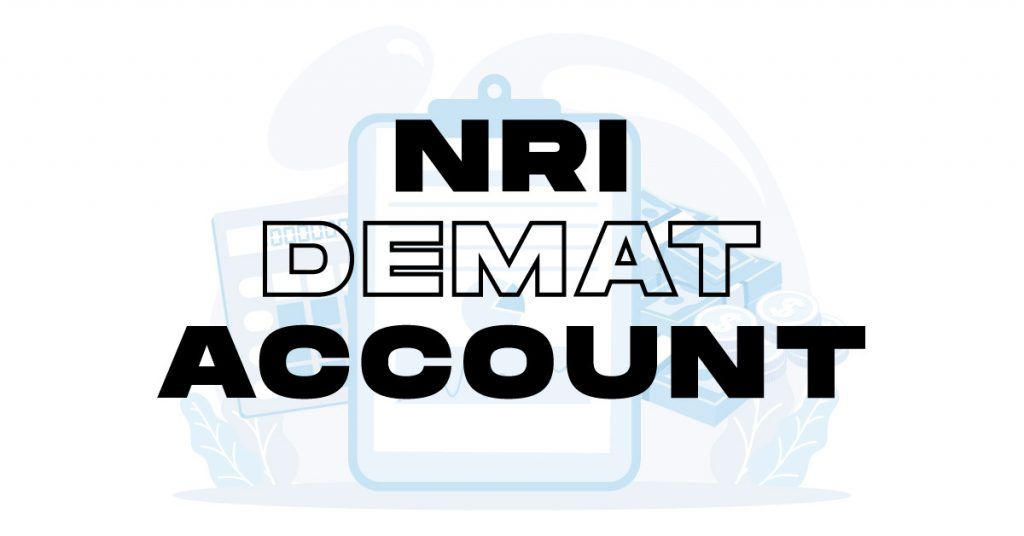How to Launch IPO in India?
Written by Upstox Desk
Published on July 31, 2025 | 9 min read

As a company owner, many responsibilities fall squarely on your shoulders. Whether it is about ensuring adequate growth of the company, keeping the infrastructure up-to-date, or repaying debts on time. All of these and many more financial obligations require funds.
While you always have an option of taking more debts, for instance, a bank loan or if you are looking forward to an easy way around, nothing would beat Initial Public Offering (IPO). It is one such offer where you transform from being a private entity into a public company, allowing the common man to purchase ownership of your firm.
This post highlights a comprehensive guide that helps you understand how to launch IPO in India.
Defining IPO
As mentioned above, IPO is abbreviated for Initial Public Offering. It is a process wherein a private company sells its share to the public. Once the company has gone public, its shares can be traded on various stock exchanges.
Advantages and Disadvantages of an IPO
While going public and raising a massive amount of money (hopefully) may seem like a lucrative option, a coin always has two sides. Jotted down below are the considerable advantages and disadvantages that you should not miss if you are planning to launch IPO in India.
| Advantages of IPO | Disadvantages of IPO |
| Allows you to raise a considerable amount of money | A time-consuming process that takes six months and a year to launch |
| Provides public exposure to the company | Increases regulatory and disclosure liabilities |
| Decreases the cost of capital as you don't need to pay interest when you raise money publically. | Puts the company under pressure to get more profitable every year |
| Paves the way for acquisitions and mergers effortlessly | It brings more expenses, like audit fees, underwriter fees, and more |
Expenses to Launch IPO in India
Without any doubt, you must know that it is an expensive procedure when you launch an IPO. If you want to make your company public, you will have to look after a series of expenses.
- To begin with, you will have to pay the feed of underwriters, which majorly depends upon the risk profile and the size of the company, along with the IPO’s total value. This fee could be anywhere between 2.5% to 5% of the entire IPO value.
- Next, you will also have to pay a significant amount towards audit fees.
- And then, you will have to bear the expense of getting the company listed on the stock exchanges.
- Lastly, you will also have to pay a yearly fee for the listing.
Eligibility for IPO
There are two methods to prove that you are eligible to launch an IPO in India. These methods are:
- Norm I
Underneath this method, you should consider the following scenarios:
-
The net worth of your firm should be Rs. 3 crores in the previous three consecutive years.
-
Your firm should have tangible assets worth Rs. 3 crores in the last three years, and monetary assets should not have more than 50%.
-
Out of the last five years, at least three years should have a minimum of Rs. 15 crores of average profit before tax.
-
The size of your IPO should not exceed five times the firm's pre-worth valuation.
-
Norm II
If your firm cannot manage to follow any of the steps mentioned above or wishes to raise a large amount of capital, the Securities and Exchange Board of India (SEBI) has come up with an alternative. This is known as the book-building method, wherein Qualified Institutional Buyers (QIBs) should get the allotment of 75% of the net offer.
How to launch IPO in India?
Here is the outline of the entire procedure for launching an IPO in India:
- Seek Help from an Investment Bank
The first step to launching IPO is hiring an investment bank. It could also be a merchant banker, an underwriter, or a lead manager. Moreover, you can seek help from multiple investment bankers as well.
Their primary responsibility is to accumulate critical information pertaining to the company. And then, they will assess the company's situation and determine the required amount to raise. Once done, you will have to sign an agreement with the underwriter wherein every single detail regarding the IPO will be mentioned.
In certain situations, underwriters may even guarantee to subscribe to a specific percentage of unsubscribed shares, depending on terms and conditions. Generally, it is their decision whether they want to go with the same or not.
For instance, if your company wants to issue up to 20,000 shares, and you have signed an agreement with the underwriter that they will subscribe to 50% of the total shares, which is 10,000. If people don't subscribe to 10,000 shares, the underwriter(s) will purchase them.
Another vital responsibility of an underwriter is to create a draft prospectus. This document contains every single detail about the IPO that investors should know. The same is prepared only when the firm intends to raise more than Rs. 50 lakhs. In a contrary scenario, this document is not required.
- Fill Up SEBI Regulatory
When your company’s draft prospectus is prepared, you must fill out the SEBI regulatory. The same draft prospectus will be sent to SEBI for review. For those who are unaware of SEBI, it is the regulatory body for securities and commodity markets in India under the ownership of the Ministry of Finance, Government of India.
Remember that you must ensure that you send the prospectus to SEBI a minimum of 30-days before going ahead with the plan to launch IPO. Once everything is evaluated thoroughly, and your draft has received a green signal, the SEBI will upload the prospectus to their website for the public to review. If SEBI finds any mismatched information or misalignments, you will have to create a corrected draft prospectus per SEBI's recommendations and comments.
- Listing on the Stock Exchanges
After submitting the draft prospectus to SEBI, you can take the next step of applying to stock exchanges to list your stock. In India, there are 24 stock exchanges. However, the Bombay Stock Exchange (BSE) and National Stock Exchange (NSE) are the most popular of all of them. You can choose one or multiple exchanges as per your preference.
Remember that you must match a certain eligibility criterion to list your company on a stock exchange. For instance, the minimum paid-up capital of your firm should be Rs. 10 crores. Along with that, your equity capitalization must not be lesser than Rs. 25 crores.
- Promotion of the Company’s IPO
Once you have managed to submit the prospectus to SEBI, you can move on to the next step, which is to promote your IPO. Companies generally advertise and market IPOs with the assistance of well-established marketing agencies. Such a process of promoting IPO is known as the Road Show. Remember that SEBI controls the marketing agencies eligible to take over the promotions of IPOs. So, make sure you go with the right one before you launch IPO in India.
- The Share’s Price
Zeroing down on the share's price is crucial to the entire IPO process. There are two ways to do the same:
- Fixed Price Offer
Under this, firms provide a fixed price for their shares, such as 500 shares at a par rate of Rs. 5. If firms wish to issue the shares at a fixed price, the costs associated for the same should be mentioned in their draft and final prospectus.
- Book Building Offer
When a firm doesn’t wish to provide the share price at a fixed rate, it can come up with a maximum and minimum bid price, also known as the price band. In such a case, the red herring prospectus will be submitted rather than a draft prospectus.
- Launching IPO
IPO must go live on the date mentioned in the prospectus. The same will be available for the general public to apply for 3-6 working days. After the IPO is closed, the allotment of shares is completed.
Frequently Asked Questions (FAQs)
Q. Why should we launch IPO?
Primarily, there are two reasons behind a company choosing to launch IPO in India. The first one is to raise capital funds to meet financial obligations, be it growing the business, buying equipment, or repaying debts. The second reason is to improve existing investors. By launching an IPO, the company gets access to a variety of investment opportunities.
Q. What is the objective of an IPO?
An IPO is about selling a company's shares to the general public. An IPO's objective is to give investors a part of the company’s ownership in return for investment/money in the company.
Q. What are the eligibility criteria to invest in an IPO?
If you wish to apply for an IPO, you must be above 18 years of age. Along with that, you must also have a PAN card, a brokerage account, and a Demat account. Also, ensure your Demat account is linked with your bank account, and there is sufficient balance to buy the shares.
Q. Can a company launch multiple IPOs?
No, a company can launch an IPO only once. However, they can opt for Follow-On Public Offer (FPO) if they need extra funds from the public. The FPOs are of two types. In a non-dilutive FPO, those holders with privately held shares end up selling stakes to the public. In a dilutive FPO, firms issue more shares to get capital.
Q. What are the risks
associated with launching an IPO?
Launching an IPO can be a time-consuming process which might take a year. There are various regulatory and compliance requirements that a firm must follow while launching an IPO. Launching an IPO is also an expensive affair as it includes multiple costs, such as audit and underwriter fees.
About Author
Upstox Desk
Upstox Desk
Team of expert writers dedicated to providing insightful and comprehensive coverage on stock markets, economic trends, commodities, business developments, and personal finance. With a passion for delivering valuable information, the team strives to keep readers informed about the latest trends and developments in the financial world.
Read more from UpstoxUpstox is a leading Indian financial services company that offers online trading and investment services in stocks, commodities, currencies, mutual funds, and more. Founded in 2009 and headquartered in Mumbai, Upstox is backed by prominent investors including Ratan Tata, Tiger Global, and Kalaari Capital. It operates under RKSV Securities and is registered with SEBI, NSE, BSE, and other regulatory bodies, ensuring secure and compliant trading experiences.

























